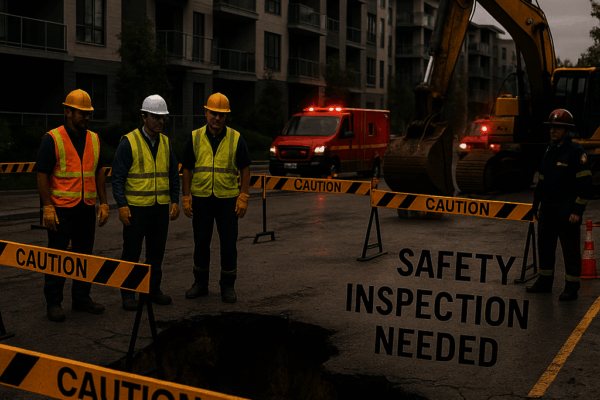A Warning from the Sky: Understanding the Meaning and Importance of a Tornado Watch
Suddenly, the sky sounds an alarm—what does a ‘Tornado Watch’ really mean, and why must we step out of our everyday routines to prepare when it happens?
A Tornado Watch is not just a simple weather term. It is an urgent message nature sends us, a crucial signal to protect lives.
When a Tornado Watch is issued, the sky is already showing signs of danger. Unstable air currents, high humidity, and sudden shifts in wind direction are creating the perfect conditions for a tornado to form. It’s like the eerie calm before a storm, signaling that a destructive twister could soon disrupt our lives.
Why should we pay close attention to a Tornado Watch?
A Chance to Prepare in Advance: A Tornado Watch gives us precious time before a tornado strikes. During this window, we can locate safe shelters and gather emergency supplies.
An Alert That Saves Lives: Tornadoes can develop instantly and cause massive damage. A Tornado Watch heightens our awareness, enabling a swift response.
The Beginning of Community Unity: This alert doesn’t just warn individuals—it prompts entire communities to prepare and take care of one another.
A Tornado Watch is not merely a signal to wait. It is an active command from the sky to take action. How thoroughly we prepare can determine the safety of our families and neighbors when faced with the threat of a tornado.
Next time a Tornado Watch is announced, how will you respond? Are you ready to listen closely to this vital message from the sky and step into action for your safety?
Watch vs. Warning: The Crucial Difference Between Tornado Messages That Can Save Lives
A single word difference between Tornado Watch and Tornado Warning can mean the difference between life and death. What sets them apart, and when is each issued? These terms frequently appear in weather forecasts, yet many people don’t fully understand their distinct meanings.
What Does a Tornado Watch Mean?
A Tornado Watch is an early alert indicating that atmospheric conditions are favorable for tornadoes to develop. It doesn’t confirm a tornado has formed but warns of a high potential for one. When a watch is in effect, you can expect:
- Unstable air and increased humidity
- Strong upward air currents and wind shear
- Conditions ripe for tornado formation within several hours
How a Tornado Warning Differs
On the other hand, a Tornado Warning is issued when a tornado has been sighted or confirmed by radar, or its occurrence is imminent. A warning signals a far more urgent situation that requires immediate action. The key differences include:
- Urgency: A watch signals risk over hours, whereas a warning indicates danger within minutes
- Certainty: A watch highlights possibility; a warning confirms occurrence or near certainty
- Response: A watch calls for vigilance and preparation; a warning demands immediate sheltering
How to Respond Correctly
When a Tornado Watch is issued:
- Continuously monitor weather updates
- Prepare emergency supplies and review your evacuation plan
- Avoid traveling and identify safe locations ahead of time
When a Tornado Warning is issued:
- Seek shelter immediately in a basement or an interior safe room
- Stay away from windows and cover yourself under sturdy furniture
- Keep listening for updates and follow emergency instructions
Understanding the critical difference between Tornado Watch and Warning—and responding appropriately—can save lives. By knowing exactly what each message means and acting swiftly, you protect yourself and your loved ones from the deadly threat of tornadoes.
The Hidden Science Behind Tornado Watches
How does the Meteorological Agency make its forecasts? Unstable atmospheres, hidden humidity, deadly winds… let’s dive into the world of science that reads these invisible danger signals.
Issuing a Tornado Watch is not just a simple prediction; it’s a scientific process that interprets complex weather phenomena. Meteorologists comprehensively analyze multiple factors to assess the likelihood of tornado formation.
Analyzing Unstable Atmospheric Structures
The first checkpoint for issuing a Tornado Watch is atmospheric instability. Meteorologists measure temperature variations with altitude to analyze the vertical structure of the atmosphere. When warm, moist air near the surface can rapidly rise, the risk of tornado formation increases significantly.
The Role of Hidden Humidity
Humidity acts as crucial fuel for tornado formation. The Meteorological Agency precisely measures the amount of water vapor in the atmosphere to decide whether to issue a Tornado Watch. Adequate moisture throughout the layers from the surface to higher altitudes is necessary to create powerful updrafts.
Detecting Deadly Wind Patterns
Wind shear is a key element in issuing a Tornado Watch. When wind direction and speed drastically change with altitude, spinning columns of air are highly likely to form. Meteorologists use Doppler radar to detect these dangerous wind patterns in real time.
Harnessing Cutting-Edge Technology
Advanced weather models and AI technology have significantly boosted the accuracy of Tornado Watch forecasts. Supercomputers analyze vast amounts of data to quantify the probability of tornado formation, guiding the decision to issue a watch.
A Tornado Watch is not just a warning; it’s the pinnacle of cutting-edge science and technology. Thanks to meteorologists’ efforts to decode invisible danger signals, we can live safer lives. Next time you hear a Tornado Watch alert, remember the powerful science working behind the scenes.
Real-World Experience Under a Tornado Watch: Real-Time Response and Case Study
In May 2025, the tornado watch situation unfolding in Wisconsin showcased a textbook example of real-time weather response. As storm chasers navigated through the storms delivering vivid on-the-ground footage, the local community activated a well-organized response system.
Tornado Watch Through the Eyes of Storm Chasers
The vehicles of storm chasers traversing Wisconsin’s vast plains resembled mobile weather observatories. The footage streamed live vividly captured the ever-changing atmospheric conditions moment by moment. From the moment the tornado watch was issued, their role became even more critical.
- Real-time data collection using high-resolution radar equipment
- Analysis of cloud formations and rotation patterns
- Measurement of ground wind speed and directional changes
This information was utilized as invaluable data supplementing the official weather alert systems.
Rapid Community Response
Upon the issuance of the tornado watch, the entire state of Wisconsin took the following urgent measures:
- Activation of Emergency Shelters: Basements of major public buildings were opened to prepare safe evacuations for residents.
- Traffic Control: Access to dangerous areas was restricted, and traffic flow on key roads was managed.
- Information Delivery System Operation: Real-time updates were broadcasted through local media and social media platforms.
Lessons from the Tornado Watch
This case proved that a tornado watch carries significance beyond a mere warning. It demonstrated that precise forecasting, swift response, and community cooperation combined can minimize the damage caused by natural disasters.
Wisconsin’s example will serve as an important reference for future improvements in disaster response systems. Tornado watch is not just a warning—it is the starting point of a comprehensive safety protocol engaging all stakeholders together.
Safety is Achieved Through Preparedness: Strategies and Future Technologies for Tornado Watch
When a Tornado Watch is issued, how should we respond? How can educational programs, advanced radar technology, and AI forecasting systems enhance our safety? In this section, we explore evacuation strategies during a tornado watch and the role of future technologies.
Effective Evacuation Strategies
The most crucial response to a tornado watch is swift and organized evacuation. Key strategies include:
- Identify Safe Shelters: Quickly move to designated basements or interior rooms.
- Prepare Emergency Supplies: Have essentials like water, food, flashlights, and batteries ready in advance.
- Gather Information: Continuously monitor local weather broadcasts and official social media channels for updates.
- Establish Family Communication Plans: Pre-arrange how to stay in touch during emergencies.
The Importance of Educational Programs
Understanding and preparing for tornado watches begins with education. Interactive programs such as tornado live shows at science centers play a vital role in raising public awareness. These programs go beyond simply conveying knowledge—they focus on enhancing real-world response skills.
The Role of Future Technologies
Technology is critical in increasing the accuracy and efficiency of tornado watch systems:
- AI-Based Prediction Models: Utilize big data and machine learning to forecast tornado likelihood with greater precision.
- High-Resolution Radar Systems: Observe weather phenomena in finer detail to improve the accuracy of tornado watch issuance.
- Ultra-Short-Term Forecasting: Provide accurate predictions within 1-2 hours to secure response time.
- Smart Alert Systems: Deliver personalized notifications with evacuation information tailored to each region and situation.
Advancements like these will make tornado watch systems more reliable and effective. However, technology alone is not enough. Recognizing the importance of tornado watches, creating preparedness plans, and engaging in ongoing education are the true keys to safety.
Safety begins with preparation. A tornado watch offers us the opportunity to be ready. When technology, education, and individual effort combine, we become safer from the threat of tornadoes.




